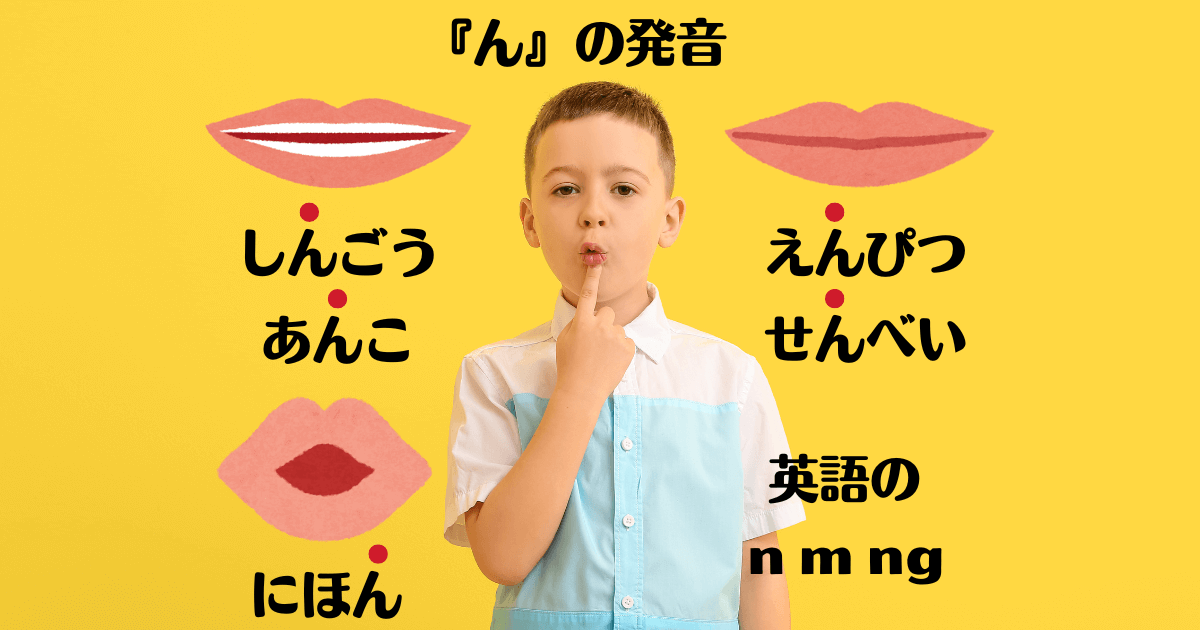私の教える学校では週に一度日本語のリテラシーグループレッスンがあります。その際にクラスの先生と私は別々のグループを持って教えます。私は大抵スピーキングかライティングのグループを持ち、クラスの先生はボキャブラリーのアクティビティーをそれぞれのグループにあったレベルで教えます。
クラスの先生は日本語を学んだ事がないし、日本語を知りません。
ただただ、先生としての経験とスキルがあるだけなのです。
このようなバックグランドの先生達がグループとは言え日本語を教えるってどーゆー事って思いますよね。実は週に一度preparation timeを貰っていて、この時間で次の週の理科、美術、音楽、日本語のレッスンの内容の話をします。基本的には私がレッスンを日本語で進めてクラスの先生はサポートが必要な時に英語で介入するという感じです。
ある日のPreparation timeにクラスの先生から質問がありました。先生達は日本語が読めないので、ローマ字表記に近い感じ(フォニックスっぽい)でメモを取ります。
ほん の 『ん』
にんじん の 『ん』
えんぴつ の 『ん』
しんごう の 『ん』
の『ん』の音が違う
と指摘がありました。
本当だ〜っと答え、確か遠い昔に発音の勉強をした時に日本語の『ん』撥音が特殊であるという事をうっすら思い出したが、説明が出来る訳もなく、質問を受けた時は何度も自分でこれらの言葉を繰り返す事で規則性を発見しようと試みたが、ゲシュタルト崩壊が発声する度に進んだのです。
なんとなく英語で置き換えると『m』『m』『ng』みたいな感じかなと説明はしたものの、
にんじん と しんごうの違いに気づいたが、この二つを『ng』と言う事でその場は一旦落ち着いた。
英語だとこの3つの発音の違いはとても重要で、流石の小学校の先生フォニックス(phoneme)を徹底的に教える訳だからね。
調べてみた
ほん の 『ん』(N)→ 英語でn
にんじん の 『ん』( ɲ)→ 英語でない
えんぴつ の 『ん』(m)→ 英語でm
しんごう の 『ん』(ŋ)→ 英語でng
にんじん は 舌の後方が上の歯茎にあたってるが
しんごう は 舌が何処にもあたっていない
この違いに気づくのはやはりネイティブだからなのでしょうか?
だけど、気付こうとしなければ気づかないし、間違って発音したとて問題なく伝わる。
これ聞いて意味わかりますよね。最初がngで、二つ目が正しい発音です。
なんと言っても日本語の発音で気をつけないといけないのは
長音(choon)この言葉自体が長音だ
私がどの様にして小学生に長音を教えているのかを次の機会にシェアします
At my school, we have a Japanese literacy group lesson once a week. During that time, the class teacher and I each have different groups to teach. I usually have a speaking or writing group, and the class teacher teaches vocabulary activities at the appropriate level for each group.
The class teacher has no experience or knowledge of Japanese, they only have the experience and skills as a teacher.
What do you think it means to have a teacher with this background teaching a group in Japanese?
Actually, we receive preparation time once a week, and during this time, we discuss the content of the science, art, music, and Japanese lessons for the coming week. Basically, I run the lessons in Japanese and the class teacher steps in when necessary.
One day during preparation time, the class teacher had a question. The teachers cannot read Japanese, so they take notes in a way that is close to romanised (Ro-ma ji) writing (something like phonics).
ほん の 『ん』
にんじん の 『ん』
えんぴつ の 『ん』
しんごう の 『ん』
The “ん” sound is different.
I was asked about the difference in pronunciation of “ん” in words like “ほん (book)”, “にんじん (carrot)”, “えんぴつ (pencil)”, and “しんごう (mind)”. It was pointed out that the sound of “ん” in these words is different.
I vaguely remembered that the pronunciation of “ん” in Japanese was special, but I couldn’t explain it well. When I was asked the question, I tried to find the pattern by repeating these words, but my speech continued to deteriorate as I tried.
I tried to explain it by saying that it might be like “m”, “m”, “ng” in English, but I noticed the difference between “にんじん” and “しんごう” and the situation was temporarily settled by saying that these two are pronounced as “ng”. In English, the difference in pronunciation of these three is very important, as it is natural for a teacher in a primary school because teachers thoroughly teach phonemes.
The sounds of “ん” in:
“hon” (book) is n
“ninjin” (carrot) is ɲ
“enpitsu” (pencil) is m
“shingou” (new) is ŋ
In “ninjin,” the back of the tongue touches the upper molars,
while in “shingou” the tongue does not touch anywhere.
Is it because native speakers are more likely to notice these differences?
However, even if you don’t try to notice, you can still communicate without any problems even if you pronounce it wrongly.
Do you understand what this means? The first is the incorrect pronunciation, and the second is the correct pronunciation.
The most important thing to be careful about when pronounced in Japanese is long vowels. The word “choon” itself has a long vowel. I’ll share with you how I teach long vowels to elementary school students next time.

